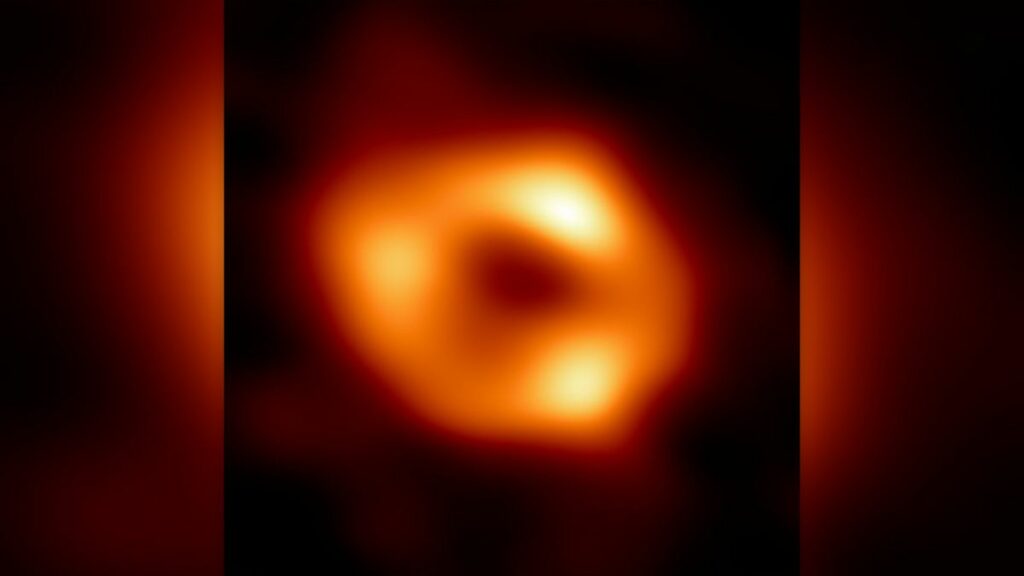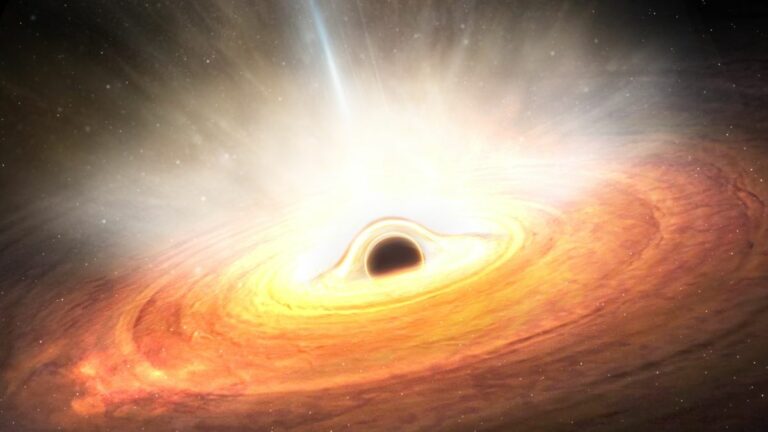A distant galaxy has been observed with a star-destroying phenomenon known as a “black hole wind,” which may provide an explanation for a significant enigma at the center of our Milky Way galaxy.
Scientists have made a groundbreaking revelation by uncovering a formidable ‘black hole wind’ that swept across a neighboring galaxy for an extended period, causing a decline in star formation and altering the galaxy’s structure. It is plausible that a comparable phenomenon might have already occurred within our own Milky Way.
Scientists are gaining valuable insights into the evolution of galaxies through the study of a volatile black hole. In a recent publication in The Astrophysical Journal Letters, researchers explain how an eruption from a distant black hole altered the landscape of its galaxy, and how similar occurrences may have influenced the development of our own Milky Way.
Situated approximately 430 million light-years away from Earth, Markarian 817 is a spiral galaxy that shares similarities with our own galaxy. It harbors a massive black hole at its core, which plays a crucial role in maintaining the cohesion of galaxies. By exerting its gravitational force on stars, dust, and other matter, the black hole ensures that everything orbits around a central point, occasionally devouring material that ventures too close to its event horizon. However, scientists recently made an unexpected observation regarding Markarian 817’s black hole.
Rather than steadily consuming the surrounding gas and dust, the black hole exhibited a “temper tantrum” and forcefully expelled the matter. This resulted in a region within the galaxy where the formation of new stars became significantly hindered. Elias Kammoun, an astronomer at Italy’s Roma Tre University and co-author of the study, stated that this observation implies that black holes may have a much greater impact on the structure of their host galaxies than previously believed.
The team managed to uncover the cause of the emissions dip with the help of XMM-Newton. It was discovered that a continuous and rapid cosmic wind, moving at a significant fraction of the speed of light, was swirling around the black hole in the galaxy. This powerful wind obscured the X-ray light emitted by the galaxy. Although black holes typically release short bursts of gas, this extended storm lasted for several hundred days, which had never been witnessed by researchers before.

After the settling of the dust, the team observed a significant reduction in dust around the black hole in the Markarian 817 region. This discovery plays a crucial role in understanding the formation of galaxies, as it reveals that black holes have the capability to suppress star formation across large areas of the galaxies they reside in, ultimately altering their shape. The researchers even suggest that this finding could potentially explain the distinctive void surrounding Sagittarius A*, the supermassive black hole in our own galaxy. Norbert Schartel, a project scientist for XMM-Newton, emphasized the immense value of the XMM-Newton mission, stating that no other mission can match its exceptional sensitivity and ability to conduct uninterrupted, long-term observations.
Do not forget to share your opinion with us to provide you with the best posts !




0 Comments